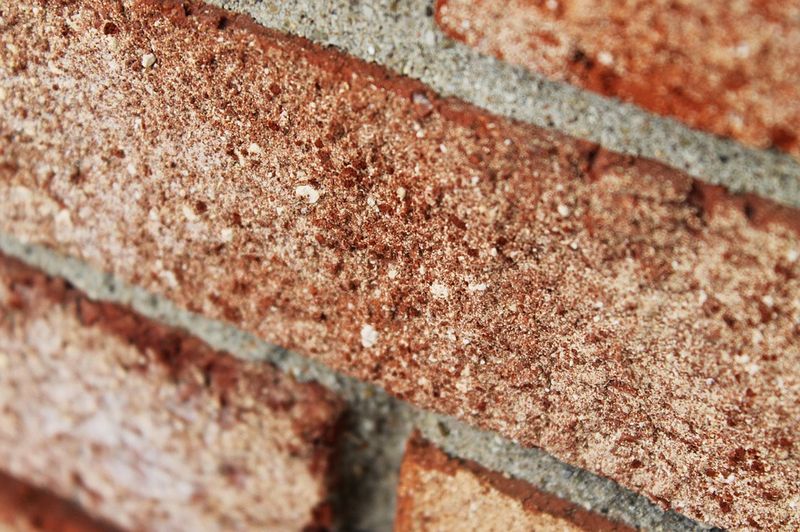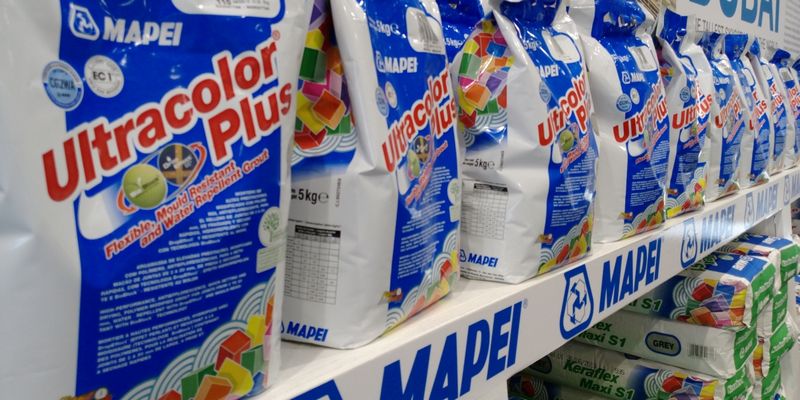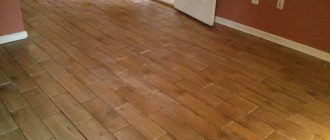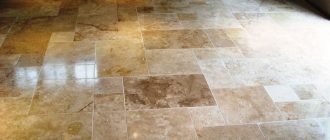
A Guide to All Things Grout
Grout is a vital component in any tile installation, serving as the adhesive between tiles and providing stability and durability. Whether you are a seasoned DIY-er or just starting out, it is important to have a comprehensive understanding of grout – from its types and application techniques to tips and tricks for maintenance.
In this guide, we will delve into all things grout, starting with an overview of the different types of grout available, such as sanded, unsanded, epoxy, and acrylic. Each type has its own set of advantages and disadvantages, and we will explore the best applications for each.
Next, we will provide helpful tips and tricks for achieving a professional-looking grout job. From the right tools to techniques for consistent spacing and smooth finish, these insider tips will help you achieve fantastic results every time.
Finally, we will cover grout maintenance and cleaning. Grout is susceptible to staining, mold, and discoloration over time. We will share the best practices for maintaining the beauty and integrity of your grout, including recommended cleaning products and techniques.
Whether you are planning to tackle a tile installation project or simply want to improve the appearance of your existing grout, this comprehensive guide will equip you with all the knowledge and skills you need. With the right information and techniques, you can achieve professional-looking grout and keep it looking pristine for years to come.
Grout: An Essential Component for Tiled Surfaces
In the world of tile installation, grout plays a crucial role. It is not just a filler between the tiles, but an essential component that provides structural support, enhances the aesthetic appeal, and protects the tiles from moisture and dirt. Grout has to endure a lot, and selecting the right grout and maintaining it properly is crucial for the longevity and durability of tiled surfaces.
Structural Support:
Grout fills the gaps between tiles, providing stability and preventing movement. It creates a unified surface, making the tiled installation more secure. Without grout, the tiles would be susceptible to shifting and cracking, compromising the integrity of the surface.
Enhancing Aesthetic Appeal:
Grout is available in a variety of colors, allowing homeowners and designers to choose a shade that complements the tiles. The right grout color can make tiles pop or create a seamless and cohesive look. Grout also comes in different textures and finishes, allowing for further customization and design possibilities.
Protection against Moisture and Dirt:
Since grout fills the gaps between tiles, it acts as a barrier against water penetration. Without grout, moisture could seep underneath the tiles, causing damage to the subfloor and potentially leading to mold growth. Additionally, grout prevents dirt, stains, and debris from accumulating in the gaps between tiles, making it easier to clean and maintain the tiled surface.
Maintenance and Cleaning:
Properly maintaining and cleaning grout is essential for prolonging its life and preserving the appearance of tiled surfaces. Regular cleaning with a pH-neutral cleaner and gentle scrubbing can help remove dirt and stains. Additionally, applying a grout sealer can provide an extra layer of protection against moisture and stains, making the grout easier to clean and maintain.
Conclusion:
In conclusion, grout is much more than just a filler between tiles. It is an essential component that provides structural support, enhances the aesthetic appeal, and protects tiled surfaces from moisture and dirt. By selecting the right grout and properly maintaining it, homeowners and designers can ensure the longevity and durability of their tiled installations.
Understanding Different Types of Grout and Their Applications
Grout is an essential component of any tiling project. It not only fills the gaps between tiles but also provides stability and durability to the overall structure. With so many different types of grout available, it can be overwhelming to choose the right one for your project. In this guide, we will explore all the different types of grout and their applications to help you make an informed decision.
1. Cement-based grout:
- Cement-based grout is the most common type of grout used for most tiling projects.
- It is a mixture of Portland cement, sand, and water.
- It is suitable for both indoor and outdoor applications.
- It is available in sanded and unsanded varieties, with sanded grout being recommended for wider grout lines.
2. Epoxy grout:
- Epoxy grout is highly resistant to stains, chemicals, and water.
- It is suitable for areas that require high durability and resistance, such as commercial kitchens and bathrooms.
- It is available in a wide range of colors and does not require sealing.
- It can be more challenging to work with and has a longer curing time compared to cement-based grout.
3. Furan grout:
- Furan grout is a type of grout that is highly resistant to chemicals and heat.
- It is commonly used in industrial settings, such as laboratories and chemical processing plants.
- It is not suitable for residential applications due to its strong odor and difficulty in installation.
4. Polymer-modified grout:
- Polymer-modified grout is a mixture of cement and polymers, which enhances its flexibility and strength.
- It is suitable for areas prone to movement, such as floors with underfloor heating.
- It is available in sanded and unsanded varieties.
5. Urethane grout:
- Urethane grout is a type of grout that offers high flexibility and resistance to stains.
- It is suitable for areas prone to moisture, such as showers and outdoor patios.
- It does not require sealing and is easy to clean.
- It is available in a wide range of colors and can be mixed with additives to enhance its properties.
When choosing the right grout for your project, consider factors such as the location, moisture levels, and desired aesthetics. It is also important to follow the manufacturer’s instructions for application and maintenance to ensure the longevity of the grout. By understanding the different types of grout and their applications, you can make an informed decision and achieve a successful tiling project.
Choosing the Right Grout Color for Your Tiles
When it comes to selecting the right grout color for your tiles, there are several factors to consider. The color of the grout can greatly impact the overall look and feel of your tiled space, so it’s important to choose wisely.
1. Consider the Tile Color:
- One of the first things to consider is the color of your tiles. If you have light-colored tiles, a darker grout color can create a nice contrast and make the tiles stand out. On the other hand, if you have dark-colored tiles, a lighter grout color can create a more subtle and cohesive look.
- Take into account any patterns or designs on your tiles as well. If your tiles have intricate patterns or designs, a grout color that complements or enhances those patterns can bring out the beauty of your tiles.
2. Contrast or Seamless Blend:
- Decide whether you want the grout to create a contrast with your tiles or if you prefer a seamless blend. Contrast can add visual interest and highlight the individual tiles, while a seamless blend can create a more uniform and uninterrupted look.
- Keep in mind that grout color can affect the perception of spacing between tiles. A lighter grout color can make the tiles appear larger and more spacious, while a darker grout color can make the tiles appear smaller and closer together.
3. Style and Atmosphere:
- Consider the style and atmosphere you want to create in the space. A neutral grout color can provide a timeless and versatile look that can easily adapt to different design styles. On the other hand, a bold or vibrant grout color can add a pop of color and create a more eclectic or contemporary look.
4. Maintenance and Durability:
- Take into account the maintenance and durability of different grout colors. Lighter grout colors can be more prone to staining and discoloration, while darker grout colors can hide stains and discoloration more effectively. Consider how much time and effort you’re willing to put into grout maintenance.
By considering these factors, you can choose the right grout color that not only complements your tiles but also enhances the overall look and feel of your space. Remember, grout color is a personal choice, so trust your instincts and go with the color that feels right for you.
Proven Techniques for Cleaning and Maintaining Grout
Grout is an essential component of any tiled surface, and its cleanliness and maintenance are crucial to preserving the overall appearance and longevity of your tiles. Here are some proven techniques for cleaning and maintaining grout:
- Regular Cleaning: One of the most important things you can do to keep your grout clean is to perform regular cleaning. This involves wiping down the tiled surface with a damp cloth or mop to remove any dirt or debris that may accumulate.
- Mild Cleaning Solution: For routine cleaning, a mild cleaning solution made from a mixture of equal parts water and vinegar can be used. Apply the solution to the grout lines and scrub gently with a soft-bristle brush. Rinse with clean water and dry the surface thoroughly.
- Deep Cleaning: For stubborn stains or heavily soiled grout, a stronger cleaning solution may be required. There are various commercial grout cleaners available that are specifically formulated to tackle tough stains. Follow the instructions on the product’s label and use a brush or sponge to scrub the grout lines. Rinse well and dry the surface.
- Sealing: Applying a grout sealer is an essential step in maintaining grout. A sealer helps to protect the grout from stains and spills, making it easier to clean. It also prolongs the life of the grout by preventing moisture and dirt from penetrating the surface. Follow the manufacturer’s instructions for application and reapply as needed.
- Preventing Mold and Mildew: To prevent mold and mildew growth in grout, it is important to keep the area well-ventilated and dry. Use an exhaust fan or open windows to allow air circulation, especially in high-moisture areas such as bathrooms. Additionally, promptly address any water leaks or spills and dry the affected area thoroughly.
- Regular Maintenance: To keep your grout looking its best, it is important to maintain it regularly. This includes wiping up spills promptly, avoiding abrasive cleaners and tools that can damage the grout, and periodically inspecting the grout lines for cracks or damage.
By following these proven techniques for cleaning and maintaining grout, you can ensure that your tiled surfaces remain clean, durable, and visually appealing for years to come.
Common Grout Problems: Causes and Solutions
Grout is an essential part of any tile installation, providing stability and preventing moisture from seeping into the underlying surfaces. However, grout can also be subject to various problems that can compromise its integrity and appearance. In this guide, we will explore some of the most common grout problems, their causes, and possible solutions.
1. Cracked Grout
One of the most common grout problems is cracking. Cracked grout can occur due to several reasons, such as:
- Settlement or shifting of the underlying surfaces
- Improper installation techniques
- Excessive tile movement or vibrations
- Insufficient grout coverage
To fix cracked grout, you will need to remove the damaged grout and replace it with fresh grout. It is also important to address the underlying cause to prevent future cracking.
2. Stained or Discolored Grout
Over time, grout can become stained or discolored, making your tiled surfaces look dingy and dirty. Common causes of stained grout include:
- Spills and stains from food, beverages, or chemicals
- Insufficient sealing or lack of maintenance
- Mold or mildew growth
To clean stained or discolored grout, you can use specialized grout cleaners or create a paste with baking soda and water. For tough stains, you may need to use a soft brush or toothbrush to scrub the grout. To prevent future staining, it is important to properly seal the grout and clean it regularly.
3. Mold and Mildew Growth
Mold and mildew thrive in moist environments, and grout lines provide the perfect breeding ground. Common causes of mold and mildew growth in grout include:
- Poor ventilation in the room
- Excessive moisture from showers, sinks, or leaks
- Inadequate cleaning and maintenance
To remove mold and mildew from grout, you can use a mixture of bleach and water, or specialized mold and mildew cleaners. It is important to scrub the grout lines thoroughly and ensure proper ventilation in the room to prevent future mold and mildew growth.
4. Loose or Missing Grout
Over time, grout can become loose or even entirely missing, which can lead to tiles shifting or coming loose. Common causes of loose or missing grout include:
- Wear and tear from heavy foot traffic
- Inadequate grout application or adhesion
- Settlement or movement of the underlying surfaces
To fix loose or missing grout, you will need to remove the damaged grout and replace it with new grout. It is important to properly clean and prep the grout lines before applying the new grout to ensure proper adhesion.
5. Uneven Grout Joints
Grout joints that are uneven or inconsistent in size can be unsightly and disrupt the overall appearance of your tiled surfaces. Common causes of uneven grout joints include:
- Inconsistent grout application techniques
- Irregular or poorly cut tiles
- Settlement or movement of the underlying surfaces
To fix uneven grout joints, you may need to remove the existing grout and reapply it, paying careful attention to achieve consistent and evenly sized joints. Proper tile installation techniques and using spacer tools can also help prevent uneven grout joints.
By understanding the common grout problems and their causes, you can take proactive measures to prevent them and maintain the integrity and appearance of your tiled surfaces. Regular cleaning, proper sealing, and addressing any underlying issues promptly are key to keeping your grout in excellent condition.
Step-by-Step Guide for Applying Grout to Newly Installed Tiles
Once you have finished installing your new tiles, it is crucial to properly apply grout to ensure a durable and attractive finish. Follow these steps to achieve a professional-looking grout application:
- Gather your supplies: Before you begin, make sure you have all the necessary supplies. This includes grout, a grout float, a grout sponge, a bucket, and clean water.
- Mix the grout: Follow the manufacturer’s instructions to mix the grout to the desired consistency. Use a separate bucket and mix only the amount of grout that you can work with in 20-30 minutes.
- Apply the grout: Hold the grout float at a 45-degree angle and spread the grout diagonally across the tiles, pressing it into the joints. Work in small sections, about 3×3 feet at a time.
- Remove excess grout: Use the edge of the grout float to remove any excess grout from the surface of the tiles. This will help create a smooth and even finish.
- Wipe off excess grout: After about 20 minutes, when the grout has started to set, use a damp grout sponge to gently wipe off any excess grout from the tiles. Rinse the sponge frequently in clean water.
- Let the grout dry: Allow the grout to dry for at least 24 hours before walking on the tiles or exposing them to moisture. Follow the manufacturer’s instructions for drying time.
- Seal the grout: Once the grout has fully dried, apply a grout sealer to protect it from staining and water damage. Follow the manufacturer’s instructions for applying the sealer.
Following these steps will ensure that your newly installed tiles have a professional and long-lasting grout finish. Remember to take your time and work in small sections to achieve the best results.
Reviving Old Grout: Tips for Restoring Its Original Appearance
If the grout in your home has seen better days and is looking worn, discolored, or just plain dirty, don’t worry – there are ways to revive it and bring back its original appearance. To help you tackle this task, we’ve put together a comprehensive guide that covers all the tips and tricks you need to know.

1. Clean the Grout Thoroughly
The first step in reviving old grout is to give it a good cleaning. Start by sweeping or vacuuming the area to remove any loose dirt and debris. Then, mix a solution of equal parts vinegar and warm water and apply it to the grout lines. Use a stiff brush to scrub the grout, working in a circular motion. Rinse with clean water and wipe dry.
2. Remove Stains
If your grout has stubborn stains that the vinegar solution didn’t tackle, you can try a more potent solution. Mix baking soda and hydrogen peroxide to create a paste and apply it to the stained areas. Let it sit for 10-15 minutes, then scrub with a brush and rinse with water. Repeat if necessary.
3. Seal the Grout
Once the grout is clean and stain-free, it’s essential to seal it to protect it from future damage. Choose a high-quality grout sealer and apply it according to the manufacturer’s instructions. This will help prevent dirt, moisture, and stains from penetrating the grout, keeping it looking fresh and clean for longer.
4. Repair Damaged Grout
If your grout is cracked or missing in certain areas, you’ll need to repair it before attempting to revive its appearance. Use a grout saw to remove any damaged grout, then apply new grout using a grout float. Be sure to match the color of the existing grout as closely as possible for a seamless finish.
5. Consider Grout Coloring
If your grout is still not looking as good as you’d like, you can consider using a grout colorant. Grout colorants are available in a variety of shades and can be applied to existing grout to change its color and give it a fresh, consistent appearance. Be sure to follow the manufacturer’s instructions when applying the colorant.
6. Maintain Your Grout
Once you’ve revived your old grout, it’s crucial to maintain it properly to keep it looking its best. Regularly clean your grout with a mild detergent and warm water, and be sure to wipe up any spills or stains as soon as they occur. Avoid using abrasive cleaning products or tools that could damage the grout.
By following these tips, you can restore your old grout to its original appearance and enjoy a fresh, clean look in your home. Remember, proper maintenance is key to keeping your grout looking great for years to come.
How to Remove Stubborn Stains from Grout Lines
When it comes to keeping your grout lines clean and stain-free, sometimes regular cleaning just isn’t enough. Stubborn stains can be a real hassle to remove, but with the right techniques and products, you can restore your grout lines to their original beauty. Here’s a step-by-step guide to help you remove those stubborn stains:
- Prepare the area: Before you begin, make sure to protect the surrounding areas by covering any adjacent surfaces or items with plastic sheets or towels. This will prevent any damage or accidental staining.
- Gather your supplies: To remove stubborn stains from grout lines, you will need a few basic cleaning supplies. These include a scrub brush or toothbrush, a mild detergent or grout cleaner, baking soda, hydrogen peroxide, and a towel or sponge.
- Pre-treat the stains: Start by pre-treating the stained grout lines. Mix a paste using baking soda and water, and apply it to the stains. Let it sit for about 10-15 minutes to allow the baking soda to penetrate the grout and break down the stain.
- Scrub the grout: After the baking soda has had time to work its magic, take your scrub brush or toothbrush and gently scrub the grout lines in a circular motion. This will help to loosen the stain and remove any dirt or debris.
- Apply a cleaning solution: If the baking soda alone isn’t doing the trick, you can use a mild detergent or grout cleaner. Follow the instructions on the product label, and apply the solution to the stained grout lines. Let it sit for a few minutes to allow the cleaner to penetrate the stain.
- Scrub again: Once the cleaning solution has had time to work, scrub the grout lines again to further remove the stain. Use a bit of elbow grease if necessary, but be careful not to scrub too hard and damage the grout.
- Use hydrogen peroxide: For particularly stubborn stains, hydrogen peroxide can be an effective solution. Apply a small amount of hydrogen peroxide directly to the stain and let it sit for a few minutes. Then, scrub the grout lines again to remove the stain.
- Rinse and dry: After you have successfully removed the stubborn stains, rinse the grout lines with clean water to remove any remaining cleaning solution or residue. Dry the grout lines thoroughly with a towel or sponge to prevent moisture and mold growth.
By following these steps and using the right cleaning techniques, you can effectively remove stubborn stains from your grout lines and keep them looking fresh and clean. Remember to always test any cleaning solution on a small, inconspicuous area first to ensure it doesn’t damage or discolor your grout.
Preventing Mold and Mildew: Grout Sealing Techniques
Mold and mildew can be a common problem when it comes to grout. These fungi can thrive in moist and damp environments, making bathrooms and kitchens prime areas for growth. However, there are several techniques you can employ to prevent mold and mildew from taking hold on your grout.
1. Clean regularly: One of the most important things you can do to prevent mold and mildew is to clean your grout regularly. Use a mild detergent and a scrub brush to remove any dirt, grime, or soap scum that may have accumulated. Regular cleaning will help prevent the growth of mold and mildew.
2. Use a grout sealer: Applying a grout sealer to your grout lines is an effective way to prevent the growth of mold and mildew. A grout sealer creates a protective barrier on the surface of the grout, making it resistant to water and moisture. This can help prevent mold and mildew from infiltrating the grout and causing damage.
3. Choose a quality grout sealer: Not all grout sealers are created equal. When choosing a grout sealer, opt for a high-quality product that is specifically designed to resist mold and mildew. Look for sealers that contain antimicrobial agents, as these can inhibit the growth of fungi.
4. Apply the sealer properly: Proper application of the grout sealer is crucial for its effectiveness. Follow the manufacturer’s instructions carefully and ensure that you cover all the grout lines thoroughly. Pay extra attention to any areas that are particularly prone to moisture, such as around sinks, showers, and tubs.
5. Reapply the sealer as needed: Over time, the protective barrier created by the grout sealer may wear off. It is important to reapply the sealer periodically to ensure continued protection against mold and mildew. Read the instructions on the sealer to determine the recommended frequency of reapplication.
By following these grout sealing techniques, you can significantly reduce the risk of mold and mildew in your grout. Regular cleaning and proper application of a high-quality grout sealer are key to maintaining a healthy and mold-free environment.
The Role of Grout in Ensuring Tile Durability and Longevity
Grout plays a crucial role in the overall durability and longevity of tile installations. It is not just a decorative element; it functions as a protective barrier that enhances the structural integrity of the entire surface. Understanding the importance of proper grouting techniques and maintenance is essential to prolonging the lifespan of your tiles.
1. Structural Support:
Grout provides structural support to the tiles by filling the gaps between them. It helps evenly distribute the weight and pressure placed on the surface, preventing individual tiles from cracking or becoming loose. Without adequate grouting, tiles may shift or break, leading to costly repairs or replacements.
2. Water Resistance:
One of the main functions of grout is to create a waterproof barrier between tiles, protecting the underlying surface from moisture damage. When installed correctly, grout prevents water from seeping in and causing mold, mildew, or rot. It is especially crucial in areas prone to moisture, such as bathrooms and kitchens.
3. Prevents Dirt and Stains:
Grout acts as a gap filler, preventing dirt, grime, and stains from accumulating between tiles. Without grout, these particles can become lodged in the gaps, compromising the appearance of the surface and making cleaning more challenging. Properly sealed grout helps maintain the aesthetic appeal of your tiles and simplifies regular maintenance.
4. Adds Visual Appeal:
While grout primarily serves functional purposes, it also contributes to the visual appeal of your tile installation. The color and texture of grout can enhance or complement the overall design scheme. It allows for creative possibilities, such as creating contrasting patterns or highlighting specific areas.
5. Minimizes Movement:
Grout helps to minimize the movement of tiles due to expansion and contraction caused by temperature changes or settling of the building. It acts as a buffer between tiles, allowing them to move slightly without causing damage. This flexibility helps to prevent cracks or fractures in the tiles.
Understanding the vital role of grout in ensuring tile durability and longevity is crucial when undertaking any tile installation project. Be sure to follow best practices for grouting, including proper mixing, application, and maintenance. Regularly inspect and clean your grout to prevent any potential issues and maintain the beauty and functionality of your tiled surfaces.
Enhancing the Aesthetic Appeal of Tiles with Colored Grout
In this comprehensive guide, we will explore how colored grout can enhance the aesthetic appeal of tiles, providing tips and tricks for achieving a beautiful and unique look.
1. Understanding the Power of Colored Grout
Traditional grout is typically a neutral color, such as white or gray. However, colored grout offers a wide range of options, allowing you to match or contrast with your tiles for a more visually striking effect.
2. Choosing the Right Color
When selecting a colored grout, consider the overall look you want to achieve. Matching grout can create a seamless appearance, while contrasting grout can add depth and visual interest. Consider the color of your tiles and the atmosphere you wish to create.
3. Preparing the Surface
Prior to applying colored grout, ensure that the tile surface is clean and free of any debris or residue. Use a mild cleanser and a soft brush to gently scrub the tiles and grout lines.
4. Applying Colored Grout
Follow the manufacturer’s instructions for mixing and applying colored grout. Use a grout float to spread the colored grout evenly, ensuring that all the grout lines are filled. Clean off any excess grout from the tiles with a damp sponge.
5. Sealing the Grout
To protect the colored grout and prolong its lifespan, it is essential to seal it. Apply a grout sealer according to the manufacturer’s instructions, typically 48-72 hours after grouting. This will prevent staining and make the grout easier to clean.
6. Maintaining Colored Grout
To keep your colored grout looking fresh, regularly clean it with a mild cleanser and a soft brush. Avoid harsh chemicals that may damage the color or texture of the grout. Periodically reapply a grout sealer to maintain its protective properties.
7. Inspiring Ideas for Colored Grout
Colored grout opens up a world of creative possibilities for tile installations. Consider using a darker colored grout with light-colored tiles for a dramatic effect, or vice versa. Experiment with different color combinations to create a unique and personalized look.
By utilizing colored grout, you can transform the appearance of your tiled surfaces and add a touch of personality to any space. With the tips and tricks provided in this guide, you can confidently embark on your grouting project and achieve stunning results.
Professional Grout Services: When to Call a Grout Specialist
While grout is a durable and long-lasting material, it can still experience wear and tear over time. As a homeowner, there may come a time when you need to call a professional grout specialist to address certain issues with your grout. Here are some signs that it’s time to call in the pros:
- Cracked or Missing Grout: If you notice that your grout lines have cracks or are missing altogether, it’s a good idea to consult a grout specialist. Cracked or missing grout can lead to water damage, mold growth, and even structural issues.
- Discoloration: Over time, grout can become discolored due to dirt, spills, and aging. While regular cleaning can help maintain the color, if your grout is significantly discolored or stained, a grout specialist can provide deep cleaning or grout coloring services to restore its original appearance.
- Mold or Mildew Growth: Excessive moisture in areas like bathrooms and kitchens can lead to mold or mildew growth in grout lines. If you notice black spots or a musty odor, it’s important to call in a grout specialist to properly assess and treat the problem, as mold can pose health risks.
- Loose or Loose Grout: When grout becomes loose or starts to crumble, it can weaken the integrity of the tile installation. A grout specialist can replace and reseal loose grout to ensure the tiles remain stable and secure.
- Difficult Stains: For stubborn stains that regular cleaning methods cannot remove, a grout specialist has the expertise to use specialized products and techniques to tackle even the toughest stains. They can ensure the stains are removed without causing damage to the grout or surrounding tiles.
Remember, addressing grout issues promptly can help prevent further damage and save you money in the long run. If you notice any of these signs, it’s best to call a professional grout specialist to evaluate and address the problem.
Questions and answers:
How often should grout be sealed?
Grout should generally be sealed at least once a year to maintain its integrity and prevent stains and mildew. However, high-traffic areas may require more frequent sealing.
What is the best way to clean grout?
The best way to clean grout is to use a mixture of warm water and vinegar or a specialized grout cleaner. Scrub the grout using a small brush or toothbrush, then rinse with clean water. For stubborn stains, a mixture of baking soda and hydrogen peroxide can be effective.
How can I prevent mold and mildew from forming on grout?
To prevent mold and mildew from forming on grout, it is important to keep the area well-ventilated and dry. Use a squeegee after showering and wipe down wet areas regularly. Additionally, sealing the grout can help prevent moisture from seeping in and causing mold and mildew growth.
What should I do if my grout starts crumbling or cracking?
If your grout starts crumbling or cracking, it is important to repair it as soon as possible. Remove the damaged grout using a grout saw or utility knife, then clean the area. Apply new grout and allow it to dry before sealing. If the damage is extensive, it may be necessary to hire a professional to re-grout the area.
Can I change the color of my grout?
Yes, you can change the color of your grout by using a grout colorant or stain. These products are available in a variety of colors and can be applied to the existing grout to achieve the desired color. However, it is important to follow the manufacturer’s instructions and test the product on a small, inconspicuous area before applying it to the entire grout.
Why is grout important for tile installations?
Grout is important for tile installations because it helps hold the tiles in place and prevents water and dirt from seeping in between the tiles.
How often should I clean and maintain grout?
It is recommended to clean and maintain grout every 6-12 months, depending on the amount of traffic and wear it receives.






